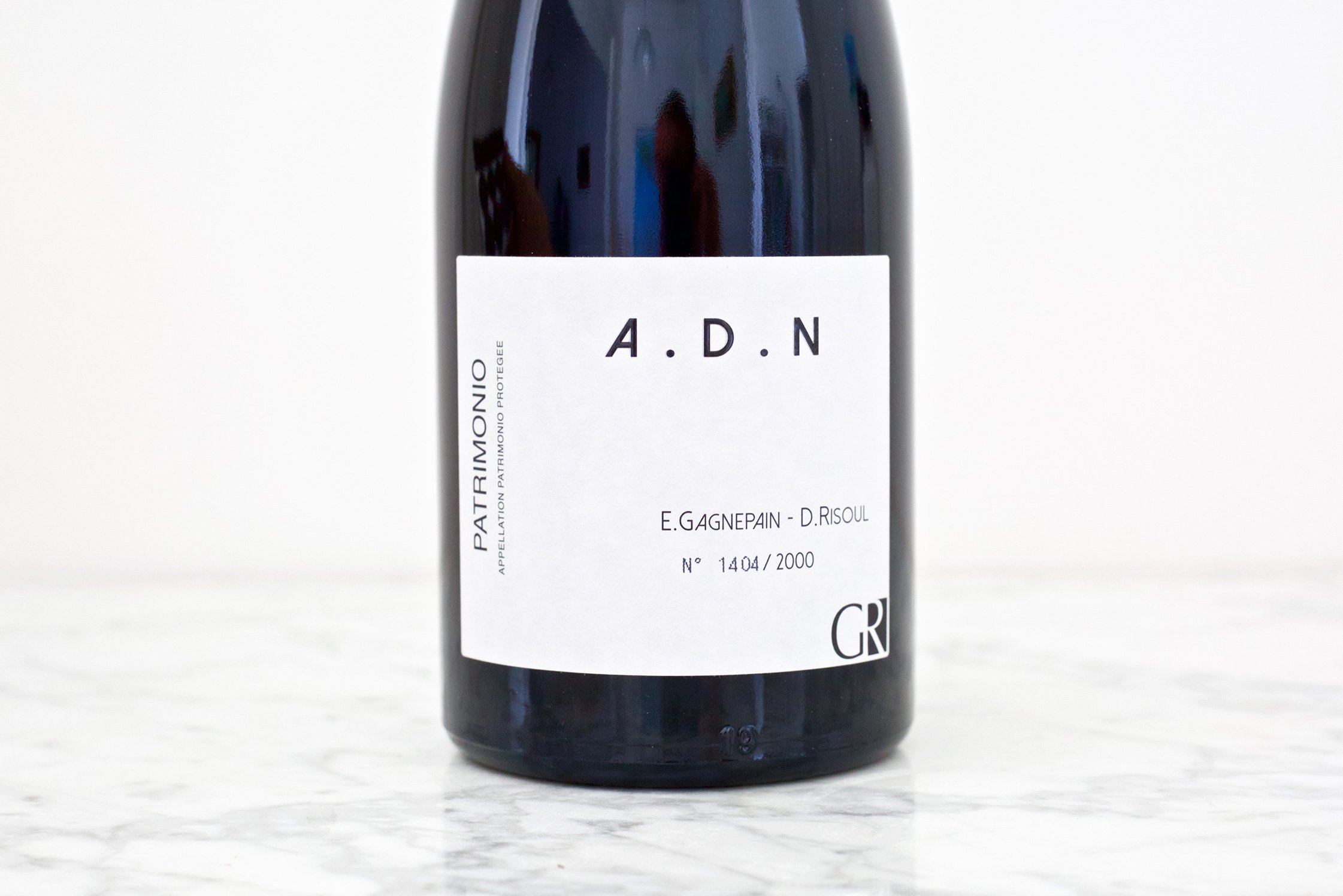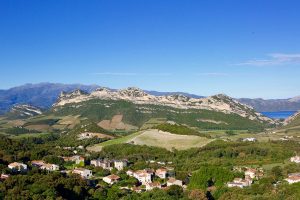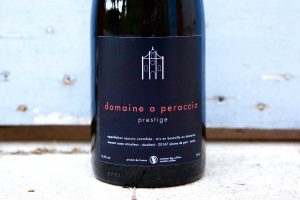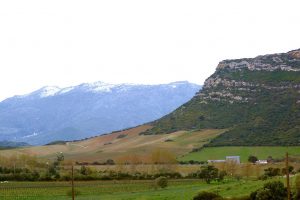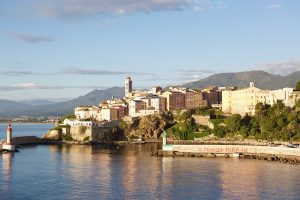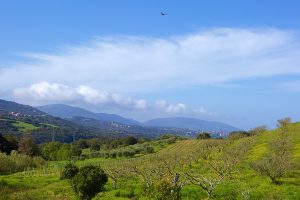It’s summertime and while we tend to veer toward drinking bubbles, rosé and white, reds still have their occasion. The six red wines in our offer come from six different organic and biodynamic growers. What I’ve chosen is only one of the many wines each of these growers makes. So, don’t stop with these, dig into their other wines by clicking their link, because there is so much pleasure and fascination to be found in each wine we import directly from these producers.
I’ve written a brief summary about the wines in The Skinny. If you want more, like I always do, you’ll find a more extended piece below that I enjoyed writing, titled, A Faux Seasonal Affair, which also includes a more in-depth overview of the wines.
The Skinny
2017 A. Peraccia Ajaccio Rouge "Prestige Cuvée"
There’s x-factor for days in this exotic and spicy red from Corsica. Thanks to its proximity to the sea, the granite soils and most of all, the lovely Sciacarello grape, this wine is a dandy. It looks and expresses like a wine from the Reynaud family of wines (I know the Rayas comparison is overused, but these wines really go that direction), but tastes Corsican. It’s one of the most compelling wines we import and we’re only able to get very small quantities.
2016 A.D.N. Patrimonio Rouge
Patrimonio is often Corsica’s most rustic, manly, hairy-chested wine, but A.D.N.’s takes a leap into a more elegant world with this wine primarily composed of Niellucciu, the island’s adapted version of Sangiovese, the famous grape from Tuscany. This wine is suave, with gobs of crunchy bright red and black fruits and lots of texture, and the full range of the island’s smells and sunny demeanor.
2013 La Madura Saint-Chinian "Grand Vin"
If one were to measure a wine’s merit by the length of its finish, layers of complexity and quality of craft, this wine would rank near the top. It’s a clean and full-throttle old-school style red mix of Mourvèdre and Syrah aged in concrete and old oak barrels. There’s not an ounce of slack here, just layer upon profound layer of texture and nuance; and it's savory to the bone—perfect for a night of long conversation in the cool summer night air.
2017 Jean David Seguret Rouge
This is singing Provençal dialect in a bottle. Jean David concedes all to his nature-filled terroirs and the old-vine Grenache, Carignan and Counoise blend in his Seguret makes the wine deep and vibrant but a refreshing take from one of the Côtes-du-Rhône’s best kept secrets. If you miss more crunchy redness in your southern French wines, this is a good place to recapture it, as these wines are picked with ripeness that truly hits the mark.
2018 Pas de L'Escalette Coteaux du Languedoc "Les Petits Pas"
It is only a matter of time before Languedoc reds shake the misconception that they are all bruisers. It is indeed the biggest region for French wine production—often of the mass variety, but this size also brings diversity in the terrain that can translate into some zones that make for crunchier style reds. Escalette’s organically farmed vineyards are in one of the coldest zones of the appellation, far from the Mediterranean. This is a sweet spot on rocky mountain terrain that preserves the tension and high-toned aromas in this Grenache, Syrah and Carignan blend.
2017 Roc des Anges Côtes-du-Roussillon "Segna de Cor"
This biodynamic winegrower is going to almost single-handedly change France’s Roussillon. (Yup, big claim…) Their wines have snap and freshness, and stick out like a beacon of hope for this region known for its exhaustive reds and fortified wines. For any serious wine drinker or Francophile, these can’t be passed over if one wants to stay in the know. This wine is a mix of Grenache, Carignan and Syrah.
A Faux Seasonal Affair
(The Extended Skinny)
I have many fond memories of Southern France, and I relive most of them at least twice a year with Pierre and Sonya, the extraordinarily talented cooks and two of the most loyal and generous friends I’ve ever had. Mas La Fabrique is their private country home in the Provençal village, Graveson, located between the ancient papal city of Avignon and the Roman city, Arles, to the south. Here the fire in their kitchen is never dormant for more than a couple of hours and the subject of food never ceases. Meals are planned days in advance and sometimes weeks. Even more than a month before I come, Sonya begins to press me for exactly what meals I will partake in and on what days. If only I were as good at business planning as they are with their meals.
The contents of La Fabrique’s meals are sourced from local purveyors, including the fabulous outdoor market located in the former Roman outpost, Van Gogh hospital locale and current celebrity hotspot, Saint-Rémy-de-Provence, and whatever you can’t find there you can get a little further south at the mile-long market in Arles, another Roman and Van Gogh hangout. The best nights in Provence are in the summer, when dinners are outside under the starry night sky and the occasional chaotic whistle of the forceful woosh of the cleansing mistral winds through the cypress trees and the constant, mesmerizing chirp of countless invisible cicadas.
Once past the aperitif, which usually involves rosé on ice (yes, I do this sometimes too…) and the almost certain first course of cold fish, seafood or vegetables followed by fresh, taut and salty white wines, the main event begins. Of course a lighter red is the right start because its still hot out and the sun is still strong, but when the mountains and trees begin to shield the sun, and the cool, sometimes thick, soft air eases the parched earth and the trees and flowers, and the wind fans a welcome damp freshness to the skin, a chilled, sweating bottle of southern French red is the proper transition into the night.
Many people carry the idea that it’s sort of a faux pas to drink full flavored, richer reds in the warmer evenings, but I don’t subscribe to this at all; we just have to wait for it to cool down a bit first and drink the red with a deeper chill than room temperature. Some think southern French reds, and other reds like them, only fit into occasions almost exclusively for cooler months. While it’s true that these heavier wines naturally compliment richer, stronger flavored dishes served with more regularity in cooler times, my summer night meals in France are often chock full of flavor and richness too, especially when the produce has regained its natural, non-greenhouse and hydroponic flavors, and the meat courses begin to make their way to an open flame. And anyone who has spent time in the south of France and dined with the French or lives close to the ocean where it can be hot in the day and sweater-worthy at night knows that the only thing faux is the idea that full-flavored red wine is a seasonal affair.
Red wines somehow enrich the meal in ways that whites and rosés don’t, no matter what time of year it is. It seems to better pair up with the deeper conversations that arise later in the night, relaxing us while softening our concentration and rendering us fully present. It helps us shed the weight of the world that then somehow remains absent until after lunch the next day. Big southern French reds, like Bandol, Châteauneuf-du-Pape, or medium-sized Saint-Chinian or Côtes-du-Rhônes somehow fit into almost all occasions, and every season. Let’s remember to forget those false ideas ordained by those who forgot how to live! Do it the southern French way, where red wine is the occasion whether it is le dîner à l'automne, en hiver, au printemps ou en été.
Wine Stories
I adore A. Peraccia's Prestige Cuvée. We get too few bottles from this Corsican gem in Ajaccio, and the only thing that stopped this minuscule allocation from disappearing as quickly as it did last year was that they had only just arrived a few months before the world shut down, so this is a rare opportunity for everyone to pounce on.
A bear of a man, Laurent Costa is the one-man-show who works his vineyards by hand, employing biodynamic and certified organic practices. Rich in beguiling x-factors channeled by Corsica’s queen red grape, Sciacarello, and the iron-rich sandy granite vineyards soils, Laurent’s Ajaccio red wines are unexpectedly captivating and complex for extremely modest prices. First timers may be taken off guard as the utterly compelling and peculiar characteristics far exceed the expectation of the price of this wine, and like any wine of true breed, you need to be patient with this one to see all of its dimensions. The color is lightly rusted garnet; the aromas are effusive, exotic and savory; and the palate is compact with a core of sappy, glycerol orange-tinted red fruits and refreshing mineral textures. It shares a similar temperament and x-factor with some uniquely individual wines, like those from France’s legendary Château Rayas and Corsica’s Abbatuci, a couple hours’ drive south, and Sicilian Frappatos by COS and Occipintini, and Langhe wines made by Guiseppe Mascarello and Fabio Alessandria, from Burlotto. The comparison to these luminaries may seem overindulgent (and it is only when comparing historic pedigree with some of the wines these producers make), but in delivery, Laurent’s wines speak the same heightened dialect and holds its own.
Moving north and further toward the east in Corsica, we arrive at Patrimonio, one of the wine world’s most complex geological spots. Granite is the most dominant geological feature for wine production on the island, but here there is the full gamut of sedimentary, metamorphic and igneous rock, sometimes even within the same vineyard. This makes for an immense amount of palate texture and depth of complexity in the resulting wines. This wine, an exciting expression of Patrimonio, is crafted by Emmanuel Gagnepain, one of France’s most well known enologists, a man with a penchant for elegance over power—quite the contrary to most enologists charged with the job of point catcher. The A.D.N. Patrimonio is grown on limestone and schist from a few different parcels and is a blend of mostly Niellucciu (believed to be from the same parent material as Sangiovese), a grape with good acidity and structure, with smaller amounts of the more elegant and high-toned aromatic, Sciaccarellu. Limestone imparts more muscle and broad complexity while the schist seems to impart more deep mineral/metal characteristics and sharper angles. The 2016 is especially refined for a Patrimonio red wine. The vintage was perfect for those who like some freshness, and the palate texture is rich in mineral sensations. Overall this organically farmed wine is a solid balance of the rustic and the suave, with good upfront red fruits and already revealing great secondary and tertiary characteristics akin to a good Brunello, minus the power, pain and high alcohol. It's a lovely wine, great with food, and a clear demonstration of the genetic and cultural heritage shared between Italy and France on Corsica.
This organically farmed wine is such a steal when considering the price and delivery. And with the extra years in bottle, La Madura's Saint-Chinian "Grand Vin" has opened up into its prime drinking window with many more years to continue its upward climb. Another blend of different bedrocks, topsoils, and grapes, the range on this wine is vast—truly… Mourvedre and Syrah take center stage and are collected from many different parcels grown on limestone, sandstone and schist bedrock, with topsoils heavy in rock derived from the bedrock and clay to cement it all in place. All of these elements contribute in different ways to the blend, giving broad impact on the palate with just the right amount of cut to keep it fresh and enticing. Once opened, the dense perfume of southern France opens up fields filled with the lavender and thyme that permeate the aromas. The palate has a balanced density with red earth, molten iron, meat and chaparral. As the wine unfolds, its softer sides take shape and offer up more red and purple fruits, Middle Eastern spices, coffee, garrigue and a deep, salty and mineral freshness. We’re all in on this one and if you like a little gentle oomph with your wines, this is a must.
Being organic or biodynamic is a way of life, not just a philosophy reserved for the fields, or an effort to keep up with a current marketing trend. The age of extraction and chemical farming continues to lose ground, and Jean David, one of France’s humble and often overlooked heroes was ahead of the curve when he went full organic in 1979, a radical move at the time in a region overwrought by chemical farming within one of France’s main breadbaskets, Provence. His home is Seguret, a small wine-producing village set on the fringe of the better known wine appellations, Gigondas and Vacqueras, and further to the west, the most famous, Châteauneuf-du-Pape. Seguret should be more well-known, but I’m happy to say that it’s not. It remains quaint and not overrun by tourists (at least in the off-season) with the occasional painter in the street working away, or a man sitting alone on the back of his truck playing the guitar for his own pleasure—both of which my wife and I saw on the same day in Seguret with not another soul in sight. It’s an inspiring village of narrow rock passageways, thankfully not suitable for cars, with sometimes just enough room for one person at a time to pass.
Seguret is an epicenter for geological studies and contains countless different rock formations from different epochs that date as far back as almost two hundred million years, with everything that’s happened up to now piled on top. Largely composed of limestone, clay and sand, the vineyards of Seguret begin low on the Ouvèze River terraces with soils derived from river deposits and work their way up toward the steep Dentelles de Montmirail, a jagged uplift of vertically positioned rocks, largely composed of limestones. It is geologically complex and so are its wines, especially for such modest prices. In these parts, there is always potential for high alcohol, power, extraction and prematurely aged, brown-tinted Grenache wines; but in Seguret the story can take a brighter more fresh turn, as it does with Jean’s wines. Protected by the Dentelles mountain range and the cool winds that flow through the Ouvèze down from Mont Ventoux, the great white limestone capped mountain of Provence, the wines can be more garnet red and dark pink on the rim of the glass, indicating less oxidation in the aging and earlier picking of the fruit. Jean’s fresh-tasting wines are balanced by the cold winds from Ventoux at night, the fifty-plus-year-old vines of Grenache (55%), Carignan (25%) and Counoise (20%), the concrete tanks the wines are vinified and aged in, the almost non-existent use of sulfur, and Jean’s pension from an organic, artistic way of life with the sole purpose to capture the true essence of his countryside in his finished product. They are true wines, with their tastes a result of concession to their land and its historical culture, truly worthy of attention from anyone looking for something honest and without pretension.
From the moment the Pas de L'Escalette "Les Petits Pas" was created, Julien and Delphine’s intention was to create a charmer in their line of wines that didn’t take itself too seriously —hence the full color pinkish red label with neon green footprints, inspired by their children. Pas de L’Escalette is nestled up into an ancient roadway that connects the Languedoc to the north by way of France’s central mountain range, the Massif Central. This is cooler wine country, far from the Mediterranean, so it’s plenty cold at night, even in the summer and this is what imparts their wines with more zippy freshness and crunchy red and dark fruits, which make it a perfect wine for warm weather. Les Petits Pas is a multi-parcel blend of organically farmed vines on limestone terroirs with a mix of 40% Grenache, 40% Syrah and 20% Carignan. Each of these grapes naturally carries ample freshness which is magnified by a little chill, making it anything but heavy under the sun. It is indeed a compelling wine for us wine geeks, but it’s more of a drink it, don’t think it kind of wine, high brow and low maintenance at the same time. It doesn’t constantly tug at your sleeve begging to show you how good it is, it’s just good.
Roc des Anges is not the kind of domaine you expect to find in the Roussillon. Marjorie and Stéphane Gallet, both transplants from other parts of France (the Côte-Rotie area and Normandy, respectively), have constructed a biodynamic wine sanctuary in the Vallée de l’Agly, a nearly deserted vineyard land dominated by co-ops and famous for producing fortified wines. (The locals continue to abandon vines every year because the yields are tragically low and make it one of the most difficult places in France to make a living with vineyards.) Since she began the project in 2001 (at age twenty-three), Marjorie’s intuitive and peaceful contemplation has resulted in wines that carry a signature of purity, focus and elegance unlike anything made in the region. They are low alcohol, hands-off, mind-on wines bottled by varietal from single sites on specific and unique soil compositions. In smell and taste, their structure and style more closely resemble that of their earthy and salty cousins from the middle of France’s Loire Valley.
The Segna de Cor is their starting block red, and it’s a knockout, as is their entire range, which I cannot recommend enough for their compelling interpretation of this part of the world. Senga de Cor is a blend of Grenache, Carignan and Syrah grown on schist. She picks the grapes weeks earlier than everyone else, and at first, her neighbors thought she was crazy. It’s impossible to think that now, and it was only a matter of time before someone came along and went against the grain to begin the reshaping of an entire region’s image. They’re doing it and the wines are fabulous.

